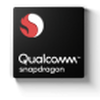Specs and details for the unannounced Qualcomm Snapdragon 1000 SoC have surfaced. The SoC is intended for use with Windows 10 and with a size of 20x15mm it will certainly not end up in a smartphone, likely they'll end up in notebooks and convertibles.
According to the information available to WinFuture the new and rather big ARM chips SDM1000 chips are expected to sit in the territory of stronger x86 processors, think Intel Atom or Celeron series. According to information from import databases, the developer platform has up to 16 GB of LPDDR4X RAM on board and has two 128 GB memory modules connected via UFS 2.1. It also includes Gigabit WLAN, the software modem of the upcoming Snapdragon 855, which seems to be closely related to the new SDM1000, and a newly developed power management chip to handle the increased power and power consumption.
The Qualcomm SDM1000 should be used in more simple Windows 10 devices, maybe even somple desktop PCs.
Details New Qualcomm Snapdragon 1000-SoC for Windows 10

